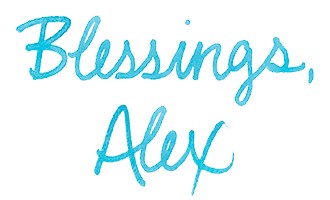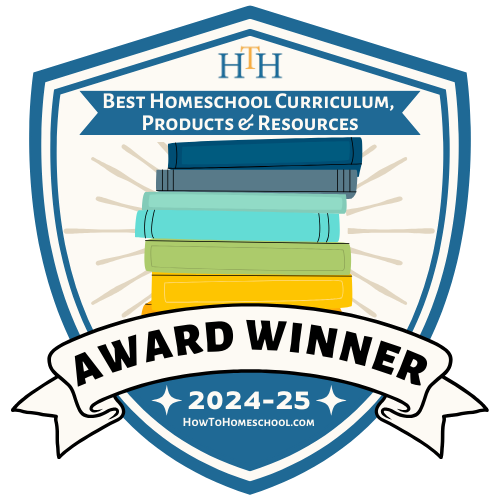How Reading Turns Summer Fun Into Homeschool Credits
"There is a temperate zone in the mind, between luxurious indolence and exacting work; and it is to this region, just between laziness and labor, that summer reading belongs."
~ Henry Ward Beecher
One of the great things about summer is the opportunity to read without being interrupted. The long car rides or layovers that happen on family trips, riding out the heat of high summer, and hours of unstructured time call for escaping into great books. This uninterrupted reading is a great way to catch extra credits or beef up existing ones. Just because reading happens in the summer doesn't mean it can't go on the transcript!
Between Laziness and Labor – Encouraging Reading
First: Demonstrate the love of literature by finding a good book for yourself and reading it in front of your children, showing them how enjoyable it is. It can be any type of book: educational, fiction, self-help, devotional, anything. The key is to be genuinely interested in what you're reading. This is the fun part!
Second: Find books that your children will enjoy reading and have them ready around the house. Or take regular trips to the library so they can explore new topics and stock up for the week.
For some students, finding a fun book will be easy. Look at 101 Great Books Recommended for College-Bound Readers. There are some great classics and interesting reads on this list! For ravenous readers, this list is sure to have several great hits.
For others, finding a good book to enjoy is a little more difficult. This is why librarians earn the "big bucks" - they have the skills needed to find an enjoyable book for almost any teen with almost any interest. Your first step is checking with a librarian. If all else fails, don't hesitate to have your children read trade magazines or even comic books (carefully screened, of course). Reading anything is better than reading nothing!
Second: Find books that your children will enjoy reading and have them ready around the house. Or take regular trips to the library so they can explore new topics and stock up for the week.
For some students, finding a fun book will be easy. Look at 101 Great Books Recommended for College-Bound Readers. There are some great classics and interesting reads on this list! For ravenous readers, this list is sure to have several great hits.
For others, finding a good book to enjoy is a little more difficult. This is why librarians earn the "big bucks" - they have the skills needed to find an enjoyable book for almost any teen with almost any interest. Your first step is checking with a librarian. If all else fails, don't hesitate to have your children read trade magazines or even comic books (carefully screened, of course). Reading anything is better than reading nothing!
Now for the Exacting Work – Summer Reading on the Transcript
To include summer reading on your student's transcript, you want it to be generally academic in nature. As I mentioned before, summer reading can be used to beef up pre-existing credits or to catch new ones! If the reading was informal, you can include it as an add-on or enrichment listed under a course description instead of a standalone course. Or if your student tackled specific genres or authors (e.g., Shakespeare, dystopian fiction, historical novels), you could give the summer segment its own half-credit elective title like "Summer Reading Seminar," "Contemporary Fiction," or "Independent Literature Study." [Remember that ½ credit = 60-90 hours and 1 credit = 120-180 hours]
If the reading is more formal with a structured reading plan—such as a themed reading list with written reflections, discussions, or projects—you can count it as part of an English or literature course. For example, if the summer reading focused on American authors, it might be credited under "American Literature." If it supported analytical skills or cross-curricular learning, a broader title like "English Enrichment" or "Literary Studies" works well.
Just be sure to document what was read, how it was evaluated (e.g., book reports, essays, discussions), and the time spent, so colleges can see its academic value.
If the reading is more formal with a structured reading plan—such as a themed reading list with written reflections, discussions, or projects—you can count it as part of an English or literature course. For example, if the summer reading focused on American authors, it might be credited under "American Literature." If it supported analytical skills or cross-curricular learning, a broader title like "English Enrichment" or "Literary Studies" works well.
Just be sure to document what was read, how it was evaluated (e.g., book reports, essays, discussions), and the time spent, so colleges can see its academic value.
Reading Strategies and Enhancing Love for Reading
Reading below grade level can increase the "love of reading" factor and increase their reading speed while helping children feel comfortable with a book in their hand. Without difficult words or complex sentence structures jumping out from every page, reading is less tedious and more enjoyable. It's important to find a balance of reading at or above grade level to increase your child's skills, and reading below grade level to increase their enjoyment.
If reading speed is a frustration or weak point, here is a simple trick for helping your students increase their reading speed. Have them use their index finger to trace the words as they read. While this might feel a bit elementary, this keeps them from backtracking, which slows down most readers. It also helps them focus on only the words right in front of them, which is especially helpful for dyslexic students. Such practice can increase your reading speed by 20% or more.
If reading speed is a frustration or weak point, here is a simple trick for helping your students increase their reading speed. Have them use their index finger to trace the words as they read. While this might feel a bit elementary, this keeps them from backtracking, which slows down most readers. It also helps them focus on only the words right in front of them, which is especially helpful for dyslexic students. Such practice can increase your reading speed by 20% or more.
A final pro tip: be sure to keep a list of books your student has read on a reading list. Colleges like to see a reading list because it helps them understand who your student is beyond just academics, and it comes in handy when you are writing course descriptions. Reading lists can be organized by year, alphabetically, by topic, or in no particular order.
What have been some of the all-time summer reading favorites in your household? Share below!
Stay Informed
When you subscribe to the blog, we will send you an e-mail when there are new updates on the site so you wouldn't miss them.

 Login
Login









.jpg)

Comments